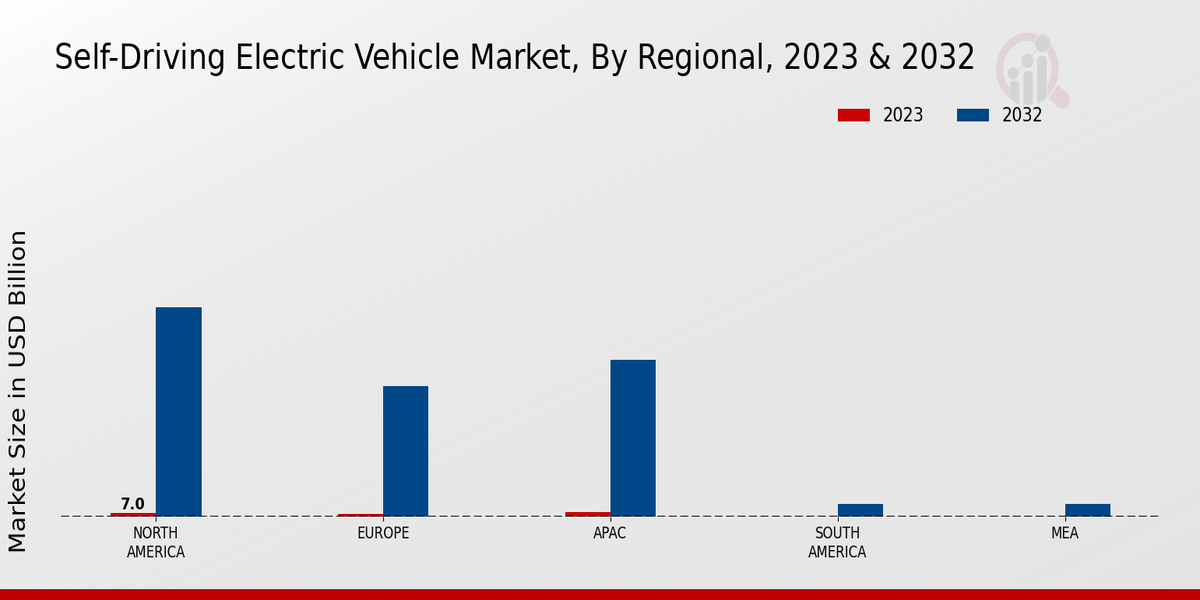Self driving Electric Vehicle Market Summary
As per MRFR analysis, the Self-driving Electric Vehicle Market Size was estimated at 38.36 USD Billion in 2024. The Self-driving Electric Vehicle industry is projected to grow from 57.66 USD Billion in 2025 to 3394.18 USD Billion by 2035, exhibiting a compound annual growth rate (CAGR) of 50.31 during the forecast period 2025 - 2035.
Key Market Trends & Highlights
The self-driving electric vehicle market is poised for substantial growth driven by technological advancements and increasing consumer demand.
- Technological integration is enhancing the capabilities of self-driving electric vehicles, particularly in North America, which remains the largest market.
- A strong focus on sustainability is shaping consumer preferences, especially in the rapidly growing Asia-Pacific region.
- The Lidar segment continues to dominate the market, while artificial intelligence is emerging as the fastest-growing technology in self-driving vehicles.
- Regulatory support and consumer demand for safety are key drivers propelling the expansion of Level 2 and Level 3 autonomous vehicle segments.
Market Size & Forecast
| 2024 Market Size | 38.36 (USD Billion) |
| 2035 Market Size | 3394.18 (USD Billion) |
| CAGR (2025 - 2035) | 50.31% |
Major Players
Tesla (US), Waymo (US), Cruise (US), Aurora (US), Nuro (US), Baidu (CN), Mobileye (IL), Zoox (US), Pony.ai (CN)


















Leave a Comment